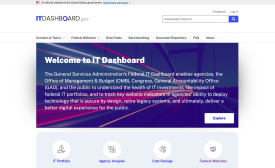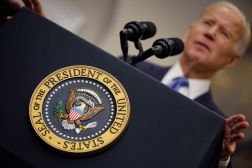Governmentwide acquisition team seeks industry input on the future of federal mobility

A cross-agency team of federal mobile procurement experts is seeking feedback from industry to determine if the U.S. government can cut down on the thousands of mobility-focused contracts on which it spends $1 billion-plus every year.
The Mobile Service Category Team launched a request for information last week, moving forward with Office of Management and Budget draft guidance from March that looks to save $230 million annually by simplifying the federal mobile marketplace through category management. That draft guidance tasked the MSCT with agreeing upon “at least one next generation government-wide acquisition solution, to be awarded prior to May 31, 2018.”
“This is a governmentwide, collaborative approach to discuss and create and shape mobility in the future in the federal government — not for today, but really with an eye toward a couple years from now — to see where are things going, what do we need to do, what do we need to create, what do we need to ask, what do we need to consider in terms of continuing to enable and account for mobility in the federal government,” Jon Johnson, a member of the MCST and enterprise mobility team manager at GSA, said Monday at an industry day for the RFI.
Currently, the mobility category team consists of members from the General Services Administration, the Defense Department, OMB, the Department of Homeland Security, the State Department and other various agencies.
Driven by the sweeping federal IT acquisition focus on category management — a philosophy that seeks to improve efficiency and reduce redundancy by grouping similar commoditized goods and services into categories, thus leveraging buying power — the mobile category team is trying to survey the scope of all mobile devices and services that are sold to and bought by federal agencies, and determine if a new governmentwide vehicle is needed or if an existing vehicle can fit the present and future mobile procurement needs of agencies.
[Read More:OMB looks to save $230M in new governmentwide mobile policy]
The team is asking mobile vendors through this RFI: “In plain English, what do you have, what are you going to have, how do you sell today, how are you looking to sell tomorrow?” Johnson said. The team is also working through other engagements, he said, to ask the opposite set of questions to agencies — surveying what devices and services they use, how they prefer to buy them, and where they plan to go with mobile in the future.
Mobility is a broad term, Johnson admitted, so his team keyed in on four areas to constrain the focus of this RFI: commodity mobile devices, wireless services, enterprise device management, and back-office support services.
Among those key areas, there is an ever-growing list of channels through which agencies buy them, and they often feature commonalities.
“The federal government does not do industry favors when it asks industry to respond to individual agencies’ needs, which are actually relatively common across the board, but do so in an independent way over and over and over again,” Johnson said. “That’s something we’re going to look to try to address.”
The end result of this RFI could be “an amalgam” of current vehicles, something brand new, or nothing at all, Johnson stressed.
“Usually the first question that people ask when they come to these things is ‘When’s the procurement come out?'” he said. “I’m telling you there is no procurement associated with this RFI…yet. We don’t know. Before we can put something together, we’re going to need to know the scope of what it is we’re looking at.”
But ultimately, the focus is set on driving savings and promoting continued cycles of reinvestment in technology innovation.
“As agencies save on costs, not only is it better for taxpayers, but they begin putting those savings [in]to creating an environment that’s able to keep up with technology,” Johnson said. “How can we create something that does not inhibit or prohibit what it is you and your companies are doing, that doesn’t end up being a typical lagging indicator that we often seem in terms of federal procurement?”
Vendors and agencies can expect to see this type of process in other areas that fit the category management push, said Kim Luke, IT category manager with OMB.
“How do we get government to be able to focus its purchasing power? How do we keep innovation moving into the market? And how do we me [agencies’] mission requirements?” Luke said.
“What you’re seeing here is a process that you’re going to see in other areas,” Luke said, referencing work around prior OMB category management guidance on hardware workstations and software. “You’re starting to see a pattern in that, which is we’re trying to look at the way government is purchasing governmentwide, not just from an agency-by-agency standpoint.”
Industry has until May 31 to provide its feedback.






